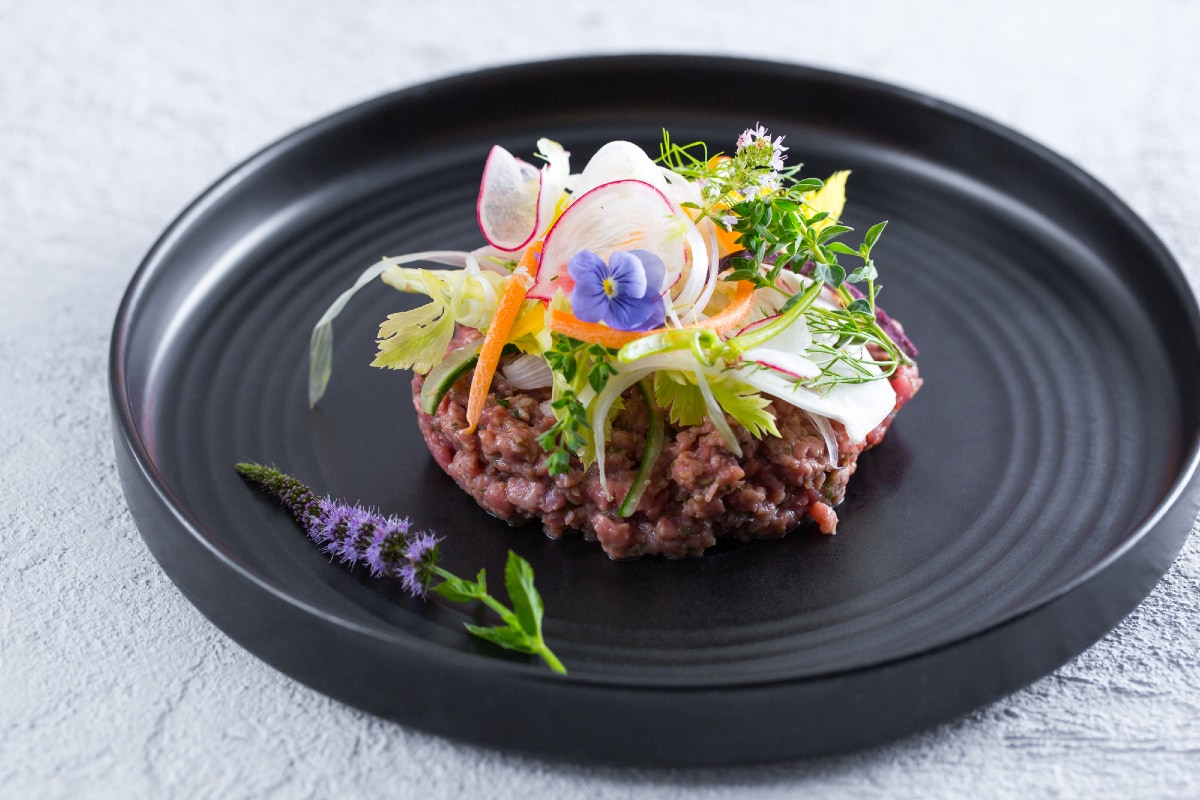Beef Tartare
- Easy
- 40 min

Florentine steak or tartare? If you usually choose the latter option, this is the recipe for you: steak tartare! A great classic of raw meat seasoned with egg yolk, mustard, and lemon juice enriched with various ingredients depending on your taste. The recipe shared with us by Chef Cesare Battisti is faithful to the traditional version and includes the addition of anchovies, capers, gherkins, scallion, and parsley for a real triumph of Mediterranean flavors! You can serve the steak tartare either as a main course or as an appetizer by halving the doses: the important thing is to prepare it at the moment to prevent the meat from cooking in its marinade. To make the beef tartare even more inviting, you can enrich it with a julienne of fresh vegetables and accompany it with potato chips and bread croutons! With our instructions and a pinch of imagination, you will bring to the table a top-quality steak tartare.
Also try these tartare variations:

To make steak tartare, first cut the meat into thin slices 1, then reduce it to cubes 2, and finally finely chop it strictly with a knife 3.

Put the minced meat in a bowl, season with salt 4 and pepper 5, then mix well 6.

Cover the bowl with plastic wrap 7 and put it in the refrigerator while you prepare the rest of the ingredients. Clean and thinly slice the scallion 8, then soak it for 5 minutes in a bowl with cold water to which you have added vinegar and salt 9.

Meanwhile, pour the egg yolks into another bowl and add the mustard 10, lemon juice 11, and oil 12.

Emulsify with a fork 13. Finally, finely chop the gherkins, anchovies, and desalted capers, the parsley, and the scallion, which you have drained and dried well 14; you should get a rather creamy consistency 15.

Add the chopped ingredients to the egg yolks 16 and mix with a fork 17, then combine the obtained mixture with the minced meat 18 and mix well to blend it with the seasoning.

Finally, season with Worcestershire sauce 19, Tabasco 20, and lemon zest 21.

Mix and plate the tartare using a ring mold 22. Garnish with fresh vegetables as desired 23 and serve your steak tartare immediately 24!